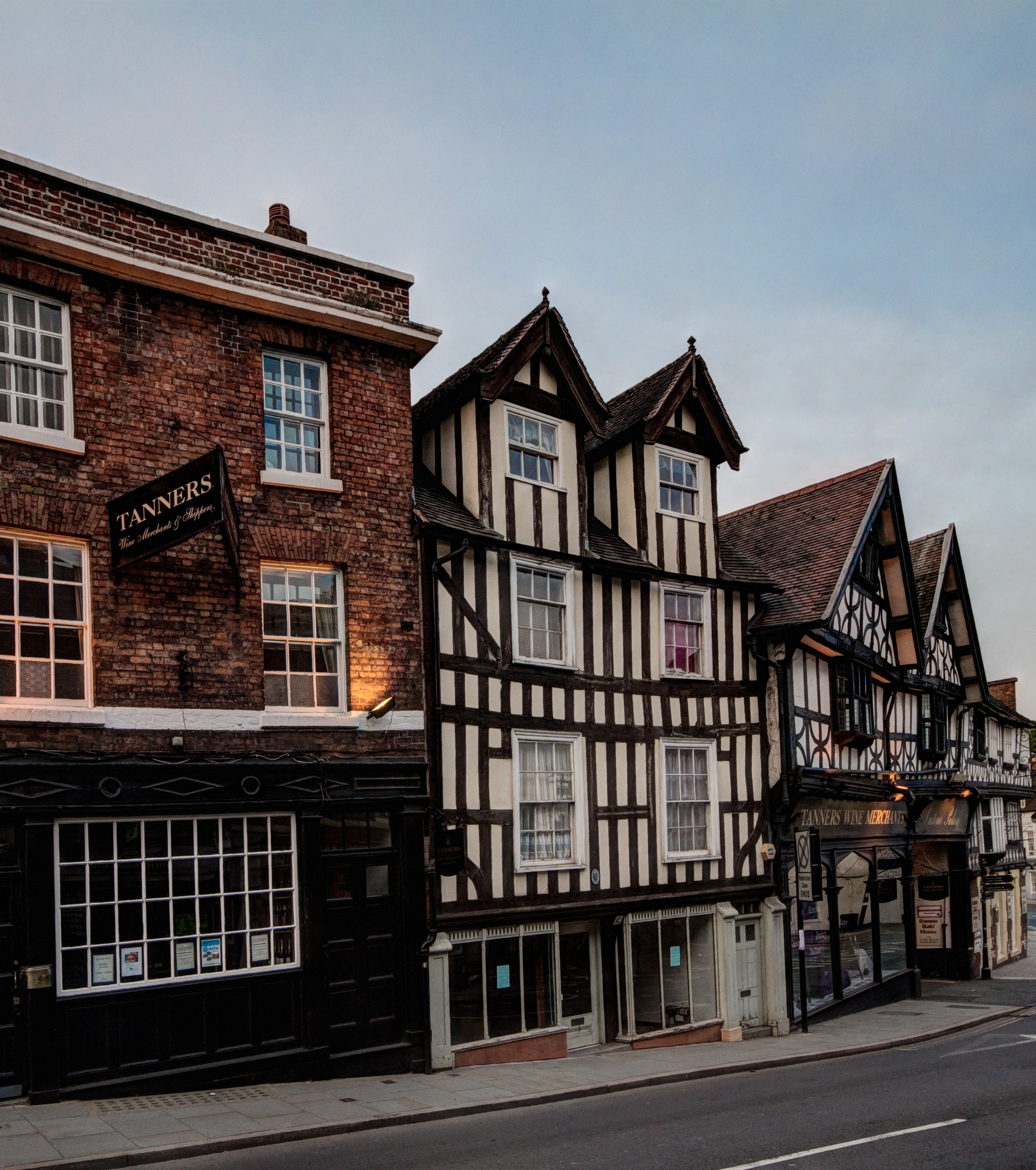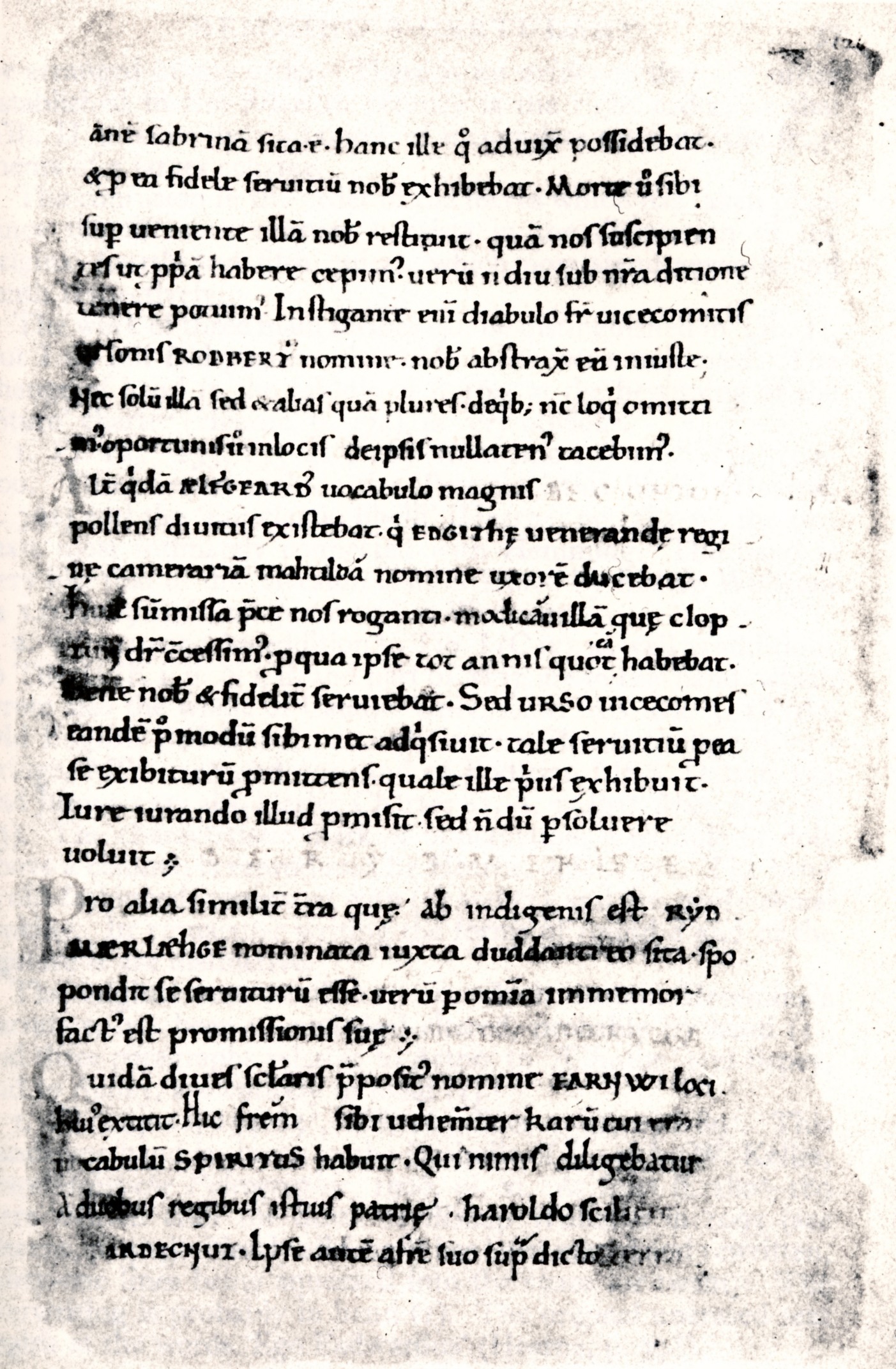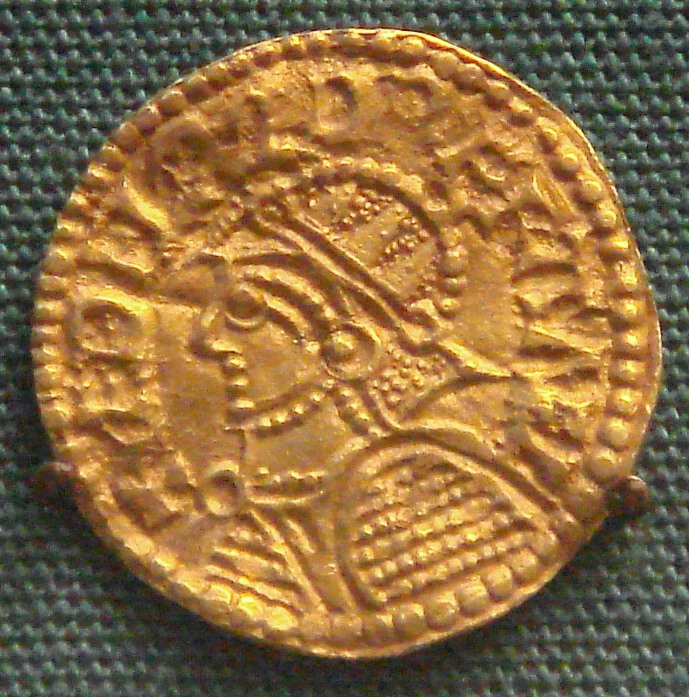|
Godwine Porthund
Godwine Porthund was listed in the ''Anglo-Saxon Chronicle'' as a butcher ("carnifex") of Shrewsbury in 1006. Ælfhelm, Ealdorman of York had been invited to a feast with Eadric Streona, who took him hunting in the forest where he was ambushed by Godwine Porthund and assassinated. Subsequently, King Æthelred the Unready had the eyes of Ælfhelm's sons Wulfheah and Ufegeat gouged out at Cookham Cookham is a historic Thames-side village and civil parish on the north-eastern edge of Berkshire, England, north-north-east of Maidenhead and opposite the village of Bourne End. Cookham forms the southernmost and most rural part of High Wyco .... In 1017 Eadric was executed by King Canute (Ælfhelm's son in law). References * * * 11th-century English people Shrewsbury History of Shropshire English assassins {{England-bio-stub ... [...More Info...] [...Related Items...] OR: [Wikipedia] [Google] [Baidu] |
Anglo-Saxon Chronicle
The ''Anglo-Saxon Chronicle'' is a collection of annals in Old English, chronicling the history of the Anglo-Saxons. The original manuscript of the ''Chronicle'' was created late in the 9th century, probably in Wessex, during the reign of Alfred the Great (r. 871–899). Multiple copies were made of that one original and then distributed to monasteries across England, where they were independently updated. In one case, the ''Chronicle'' was still being actively updated in 1154. Nine manuscripts survive in whole or in part, though not all are of equal historical value and none of them is the original version. The oldest seems to have been started towards the end of Alfred's reign, while the most recent was written at Peterborough Abbey after a fire at that monastery in 1116. Almost all of the material in the ''Chronicle'' is in the form of annals, by year; the earliest are dated at 60 BC (the annals' date for Caesar's invasions of Britain), and historical material follows u ... [...More Info...] [...Related Items...] OR: [Wikipedia] [Google] [Baidu] |
Shrewsbury
Shrewsbury ( , also ) is a market town, civil parish, and the county town of Shropshire, England, on the River Severn, north-west of London; at the 2021 census, it had a population of 76,782. The town's name can be pronounced as either 'Shrowsbury' or 'Shroosbury', the correct pronunciation being a matter of longstanding debate. The town centre has a largely unspoilt medieval street plan and over 660 listed buildings, including several examples of timber framing from the 15th and 16th centuries. Shrewsbury Castle, a red sandstone fortification, and Shrewsbury Abbey, a former Benedictine monastery, were founded in 1074 and 1083 respectively by the Norman Earl of Shrewsbury, Roger de Montgomery. The town is the birthplace of Charles Darwin and is where he spent 27 years of his life. east of the Welsh border, Shrewsbury serves as the commercial centre for Shropshire and mid-Wales, with a retail output of over £299 million per year and light industry and distributi ... [...More Info...] [...Related Items...] OR: [Wikipedia] [Google] [Baidu] |
Eadric Streona
Eadric Streona (died 1017) was Ealdorman of Mercia from 1007 until he was killed by King Cnut. Eadric was given the epithet "Streona" (translated as "The Acquisitive”) in Hemming's Cartulary because he appropriated church land and funds for himself. Eadric became infamous in the Middle Ages because of his traitorous actions during the Danish re-conquest of England. Eadric was one of at least eight children and had relatively humble beginnings: his father Ethelric attended the court of King Æthelred the Unready, but was of no great significance and is not known to have had any titles. Even before becoming an ealdorman, Eadric seems to have acted as Æthelred's enforcer; in 1006 he instigated the killing of the Ealdorman of York, Elfhelm. Eadric was married to Æthelred's daughter Eadgyth by 1009, thus becoming his son-in-law. Eadric was appointed Ealdorman of Mercia in 1007. As an ealdorman, Eadric played an important role in the affairs of the kingdom. In 1009 he negotiate ... [...More Info...] [...Related Items...] OR: [Wikipedia] [Google] [Baidu] |
Æthelred The Unready
Æthelred II ( ang, Æþelræd, ;Different spellings of this king’s name most commonly found in modern texts are "Ethelred" and "Æthelred" (or "Aethelred"), the latter being closer to the original Old English form . Compare the modern dialect word ., non, Aðalráðr 966 – 23 April 1016), known as Æthelred the Unready, was King of the English from 978 to 1013 and again from 1014 until his death in 1016. His epithet does not derive from the modern word " unready", but rather from the Old English meaning "poorly advised"; it is a pun on his name, which means "well advised". Æthelred was the son of King Edgar the Peaceful and Queen Ælfthryth. He came to the throne at about the age of 12, following the assassination of his older half-brother, King Edward the Martyr. The chief problem of Æthelred's reign was conflict with the Danes. After several decades of relative peace, Danish raids on English territory began again in earnest in the 980s, becoming mark ... [...More Info...] [...Related Items...] OR: [Wikipedia] [Google] [Baidu] |
Cookham
Cookham is a historic Thames-side village and civil parish on the north-eastern edge of Berkshire, England, north-north-east of Maidenhead and opposite the village of Bourne End. Cookham forms the southernmost and most rural part of High Wycombe urban area. With adjoining Cookham Rise and Cookham Dean, it had a combined population of 5,779 at the 2011 Census. In 2011, ''The Daily Telegraph'' deemed Cookham Britain's second richest village. Geography The parish includes three settlements: *Cookham Village – the centre of the original village, with a high street that has changed little over the centuries *Cookham Dean – the most rural village in the parish *Cookham Rise – the middle area that grew up round the railway station The ancient parish of Cookham covered all of Maidenhead north of the London and Bath Road until this was severed in 1894, including the hamlets of Furze Platt and Pinkneys Green. There were several manors: Cookham, Lullebrook, Elington, Pinkney ... [...More Info...] [...Related Items...] OR: [Wikipedia] [Google] [Baidu] |
Cnut The Great
Cnut (; ang, Cnut cyning; non, Knútr inn ríki ; or , no, Knut den mektige, sv, Knut den Store. died 12 November 1035), also known as Cnut the Great and Canute, was King of England from 1016, King of Denmark from 1018, and King of Norway from 1028 until his death in 1035. The three kingdoms united under Cnut's rule are referred to together as the North Sea Empire. As a Danish prince, Cnut won the throne of England in 1016 in the wake of centuries of Viking activity in northwestern Europe. His later accession to the Danish throne in 1018 brought the crowns of England and Denmark together. Cnut sought to keep this power-base by uniting Danes and English under cultural bonds of wealth and custom. After a decade of conflict with opponents in Scandinavia, Cnut claimed the crown of Norway in Trondheim in 1028. The Swedish city Sigtuna was held by Cnut (he had coins struck there that called him king, but there is no narrative record of his occupation). In 1031, Malcolm II of ... [...More Info...] [...Related Items...] OR: [Wikipedia] [Google] [Baidu] |
Cambridge University Press
Cambridge University Press is the university press of the University of Cambridge. Granted letters patent by Henry VIII of England, King Henry VIII in 1534, it is the oldest university press in the world. It is also the King's Printer. Cambridge University Press is a department of the University of Cambridge and is both an academic and educational publisher. It became part of Cambridge University Press & Assessment, following a merger with Cambridge Assessment in 2021. With a global sales presence, publishing hubs, and offices in more than 40 Country, countries, it publishes over 50,000 titles by authors from over 100 countries. Its publishing includes more than 380 academic journals, monographs, reference works, school and university textbooks, and English language teaching and learning publications. It also publishes Bibles, runs a bookshop in Cambridge, sells through Amazon, and has a conference venues business in Cambridge at the Pitt Building and the Sir Geoffrey Cass Spo ... [...More Info...] [...Related Items...] OR: [Wikipedia] [Google] [Baidu] |
11th-century English People
The 11th century is the period from 1001 ( MI) through 1100 ( MC) in accordance with the Julian calendar, and the 1st century of the 2nd millennium. In the history of Europe, this period is considered the early part of the High Middle Ages. There was, after a brief ascendancy, a sudden decline of Byzantine power and a rise of Norman domination over much of Europe, along with the prominent role in Europe of notably influential popes. Christendom experienced a formal schism in this century which had been developing over previous centuries between the Latin West and Byzantine East, causing a split in its two largest denominations to this day: Roman Catholicism and Eastern Orthodoxy. In Song dynasty China and the classical Islamic world, this century marked the high point for both classical Chinese civilization, science and technology, and classical Islamic science, philosophy, technology and literature. Rival political factions at the Song dynasty court created strife among ... [...More Info...] [...Related Items...] OR: [Wikipedia] [Google] [Baidu] |
History Of Shropshire
Shropshire was established during the division of Saxon Mercia into shires in the 10th century. It is first mentioned in 1006. After the Norman Conquest it experienced significant development, following the granting of the principal estates of the county to eminent Normans, such as Roger De Montgomery and his son Robert de Bellême. The Coalbrookdale area of the county is designated "the birthplace of the Industrial Revolution", due to significant technological developments that happened there. Etymology The origin of the name "Shropshire" is the Old English "Scrobbesbyrigscīr" (literally ''Shrewsburyshire''), perhaps taking its name from Richard Scrob (or FitzScrob or Scrope), the builder of Richard's Castle near what is now the town of Ludlow. However, the Normans who ruled England after 1066 found both "Scrobbesbyrig" and "Scrobbesbyrigscir" difficult to pronounce so they softened them to "Salopesberia" and "Salopescira". Salop is the abbreviation of these. When a council ... [...More Info...] [...Related Items...] OR: [Wikipedia] [Google] [Baidu] |





